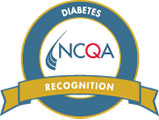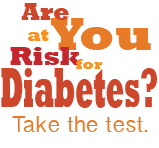Pre-Diabetes
What is Pre-Diabetes?
About 75 million Americans have Pre-Diabetes, so it is a very common clinical issue. Pre-Diabetes is defined as a fasting blood sugar between 100-125 or an A1c greater than 5.8 and less than 6.5. It’s when your blood glucose level is higher than normal (>100), but it’s not high enough to be considered diabetes (>125 on two occasions). There are other typical characteristics of pre-diabetes we call the Metabolic Syndrome;
(1.) Obesity defined by a Body Mass Index (BMI) >30, a belt size in a woman >35 inches or in a man >40 inches.
(2.) Hypertension or high blood pressure.
(3.) Low HDL cholesterol (“Good Cholesterol”) < 40 in men and <50 in women.
(4.) High triglycerides, >150. If you have three of these factors, you have the metabolic syndrome, as well.
Pre-diabetes is an indication that you may develop type 2 diabetes if you don’t make some lifestyle changes. About 30 % of people with pre-diabetes go on to develop type 2 diabetes and we know that it is treatable.
The good news is that it is possible to prevent pre-diabetes from developing into type 2 diabetes. Eating healthy food, losing weight, and being physically active can help you bring your blood glucose level back into the normal range. By this treatment, many people can prevent the development and complications of diabetes.
Symptoms
Diabetes develops very gradually, so when you’re in the pre-diabetes stage, you may have no symptoms at all. You may however notice symptoms of diabetes:
• You are hungrier than normal
• You are losing weight, despite eating more
• You are thirstier than normal
• You have to go to the bathroom more frequently
• You are more tired than usual
All of these are typical symptoms associated with diabetes, so if you are in the early stages of diabetes, you may notice these symptoms.
Causes and Risk Factors
Pre-diabetes develops when your body begins to develop resistance to the hormone insulin or makes too little insulin. Insulin is necessary to transport glucose from the blood to the cells in your body. In pre-diabetes, your body either doesn’t make enough insulin or it doesn’t use it well (that’s called insulin resistance). Obesity, genetic predisposition and inactivity are risk factors for insulin resistance. If you don’t have enough insulin or if you are insulin resistant, you can build up too much glucose in your blood, leading to a higher-than-normal blood glucose level and perhaps pre-diabetes.
Risk Factors:
• Weight: If you are overweight (have a BMI of higher than 25), you are at a high risk for developing pre-diabetes. Especially if you carry a lot of extra weight in your abdomen, you may develop pre-diabetes. The fat cells and other organs release factors that can cause your body to become more insulin resistant.
• Lack of physical activity: This often goes hand-in-hand with being overweight. If you aren’t physically active, you burn fewer calories and are more likely to develop pre-diabetes.
• Family history: Pre-diabetes has a hereditary factor. If someone in your close family has (or had) it, you are more likely to develop pre-diabetes.
• Race/ethnicity: Certain ethnic groups are more likely to develop pre-diabetes, including African-Americans, Hispanic Americans, Native Americans, and Asian Americans.
• Age: The older you are, the more at risk you are for developing pre-diabetes. At age 45, your risk starts to rise, and after age 65, your risk increases exponentially.
• Gestational Diabetes: If you developed diabetes while you were pregnant, that increases your risk for developing pre-diabetes and diabetes later on in life.
• Other health problems: High blood pressure (hypertension) and high cholesterol (the “bad” LDL cholesterol) are associated with developing type 2 diabetes.
• Polycystic Ovary Syndrome (PCOS): Raises the risk of pre-diabetes because it is related to insulin resistance. In PCOS, many cysts form in a woman’s ovaries, and one possible cause is insulin resistance. If you have PCOS, that means you may be insulin resistant and therefore at risk for developing pre-diabetes and diabetes later on in life.
Diagnosis
Your doctor may want to test your fasting blood glucose levels if you are overweight and if you have one or more of the risk factors listed above. Even if you aren’t overweight and don’t have any of the risk factors, you doctor may want to start testing your blood glucose level every three years beginning when you are 45, due to the risk of developing pre-diabetes ( and possibly type 2 diabetes) because the risk of diabetes increases with age. Because there are so many possible complications of diabetes (heart problems, kidney, eye and nerve problems), it is a good idea to be vigilant about detecting blood glucose abnormalities early.
The following tests may be used to diagnose pre-diabetes:
• Fasting Plasma Glucose Test (FPG): You can’t eat anything for eight hours leading up to the test, so this test is often done in the morning. The doctor checks your blood glucose level (blood sugar level) after drawing a small blood sample. If your blood glucose level is between 100 and 125 mg/dL, you have pre-diabetes. You may hear the doctor use the phrase “impaired fasting glucose” or IFG, which is another term for pre-diabetes when it’s diagnosed with the fasting plasma glucose test. If your blood glucose level is above 125mg/dL with the FPG test, you should have a repeat blood test to see if you have the diagnosis of Diabetes.
• Oral Glucose Tolerance Test (OGTT): This is another test used to diagnose pre-diabetes. The doctor will give you instructions on how to prepare for the test, but you won’t be able to eat anything for eight hours before the test; you will be fasting. In that way, the oral OGTT is similar to the FPG test. On the day of the test, the doctor will test your blood glucose level at the beginning of the appointment; that is called your fasting blood glucose level. Then, you will drink 75g of a sugary mixture. Two hours later, your blood glucose level will be measured. If your blood glucose level is between 140 and 199mg/dL two hours after drinking the sugary mixture, you have pre-diabetes. You may hear the doctor us the phrase “impaired glucose tolerance” or IGT, which is another term for pre-diabetes when it is diagnosed with the OGTT. If your blood glucose level is above 200mg/dL with the oral glucose tolerance test, you have the diagnosis of diabetes.
• A hemoglobin A1c which is another way to diagnose Pre – Diabetes. The A1c is a three month average of your blood glucose; if it is > 5.8 or < 6.5 then you have Pre-Diabetes.
Treatments
The American Diabetes Association (ADA) says that lifestyle changes are the most effective way to prevent type 2 diabetes after you have been diagnosed with pre-diabetes.
• Eat Well: A registered dietitian (RD) or certified diabetes educator (CDE) can help you create a meal plan that is modeled after the ADA recommendations to prevent diabetes. The goal of the meal plan is to control your blood glucose level and keep it in the healthy, normal range. Your meal plan will be made just for you, taking into account your overall health, physical activity, and what you like to eat. For more information on what goes into the meal plan and what you can eat, read the article on the ADA website by using the following link: (http://www.diabetes.org/food-and-fitness/food/planning-meals)
• Exercise: When you exercise, your body uses more glucose, so exercising can lower your blood glucose level. Also when you exercise, your body doesn’t need as much insulin to transport glucose; your body becomes less insulin resistant. Since your body isn’t using insulin well when you have pre-diabetes, lowering insulin resistance is a very good thing. And of course, there are all the traditional benefits of exercise; it can help you lose weight, keep your heart healthy, make you sleep better, improve your mood , as well as lower the risk for heart disease. The ADA recommends at least 150 minutes of moderate activity a week – that is 30 minutes five days a week. You can get that through activities such as walking, bike riding, or swimming. However, before embarking on an exercise program, first discuss it with your physician.
• Lose Weight: If you are overweight, you should get started on a weight loss program as soon as you are diagnosed with pre-diabetes. Losing 5 to 10% of your weight can significantly lower your insulin resistance and reduce your risk of developing type 2 diabetes. If you weigh 200 lbs., that would be 10-20 lbs. The combination of eating well and exercising more is a great way to lose weight and then maintain your new, healthy weight.
• Medications: For people who are at a very high risk of developing type 2 diabetes after being diagnosed with pre-diabetes, the doctor may recommend a medication. There are several medications that which can also be used to prevent type 2 diabetes, however the ADA recommends a trail of Metformin for those at high risk for developing diabetes.
Your doctor will keep a close watch on your blood glucose levels, monitoring them to make sure that your pre-diabetes doesn’t become type 2 diabetes. If needed, the doctor may suggest adjustments (a different diet or more exercise) to better control your blood glucose levels or the addition of medication in high risk patients.
![]()












